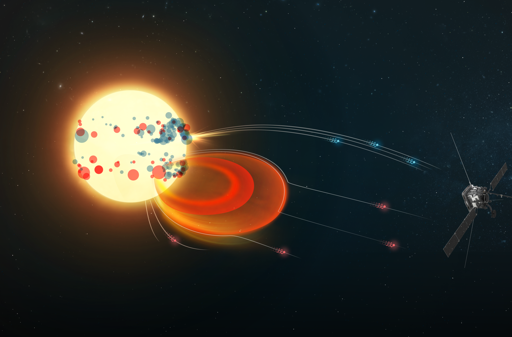Double Trouble: Solar Orbiter Traces Superfast Electrons Back to Sun
-
The Sun is the most energetic particle accelerator in the Solar System. It whips up electrons to nearly the speed of light and flings them out into space, flooding the Solar System with so-called ‘Solar Energetic Electrons’ (SEEs).
Researchers have now used Solar Orbiter to pinpoint the source of these energetic electrons and trace what we see out in space back to what’s actually happening on the Sun. They find two kinds of SEE with clearly distinct stories: one connected to intense solar flares (explosions from smaller patches of the Sun’s surface), and one to larger eruptions of hot gas from the Sun’s atmosphere (known as ‘coronal mass ejections’, or CMEs).

Double trouble: Solar Orbiter traces superfast electrons back to Sun
The European Space Agency-led Solar Orbiter mission has split the flood of energetic particles flung out into space from the Sun into two groups, tracing each back to a different kind of outburst from our star.
(www.esa.int)
-
 S Science shared this topic on
S Science shared this topic on
